|
Wisley's Alpine Log
By Paul Cumbleton
Log 12 5th June 2008
May has already gone, but was as usual for us one of the best months of the year for flower and colour in the Display House as well as outdoors on the rock garden. The Phloxes have been very good this year, such as this P. douglasii 'Red Admiral' in a trough:
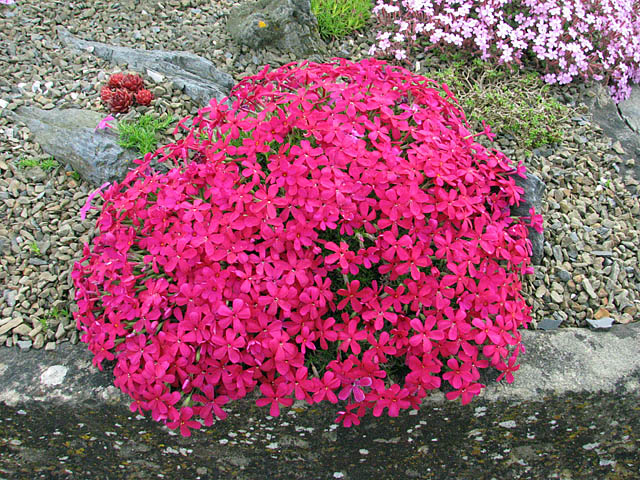
P. douglasii 'Red Admiral'
In a nearby raised bed, the striped Phlox subulata 'Tamaongalei' was also putting on a great show:
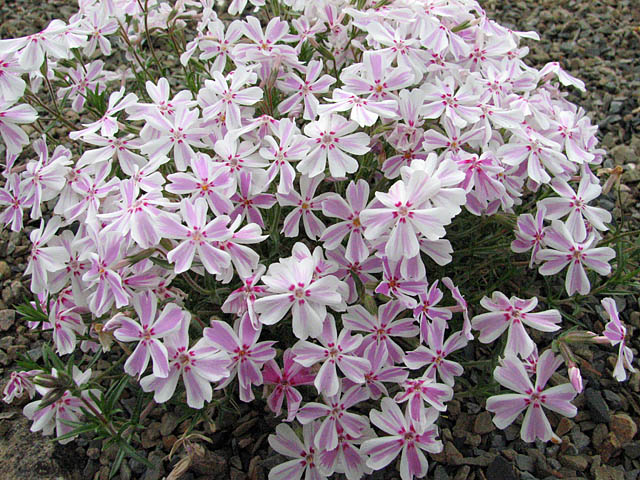
Phlox subulata 'Tamaongalei'
The same bed was showing Aster alpinus in a good deep mauve form. The flowers somehow look almost too large for the plant:
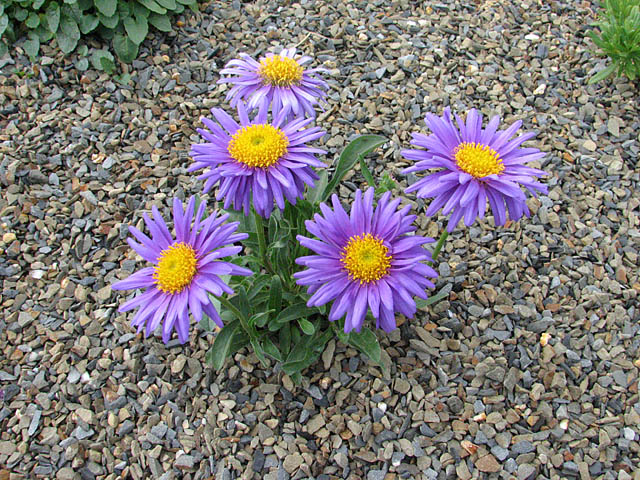
Aster alpinus
This species also does well for us in a tufa wall, where it remains more compact and the flowers not so large. Edrainthus pumilio also thrives in the tufa and I think looks good in bud as well as in flower
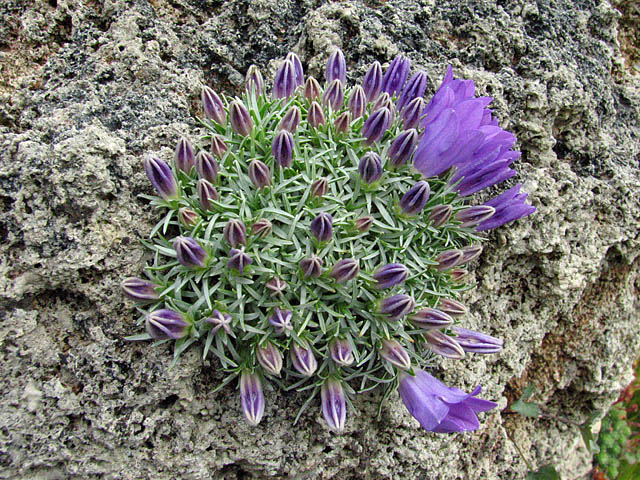
Edrainthus pumilio
Another plant that I always think looks good in bud is Tropaeolum polyphyllum which is fantastic in flower too.
.jpg)
Tropaeolum polyphyllum (bud)
.jpg)
Tropaeolum polyphyllum (flower)
Helianthemums are a mainstay of any rock garden in the summer and there are so many varieties to choose from. Some have the most brilliantly coloured flowers such as this Helianthemum 'Welsh Flame':
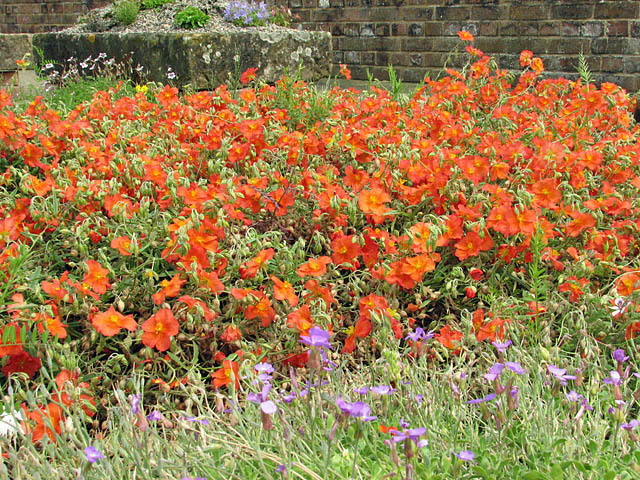
Helianthemum 'Welsh Flame':
If you give your helianthemums a light trim over just after flowering, they will often produce a second flush of flowers and it also helps to keep them more compact. Over a few years they tend to become woody and leggy and don't perform as well. A hard prune in early spring may revive them, but it is better to have some cuttings coming along with which to replace older plants. Cuttings root easily if taken in late summer, wintered under cold glass then planted out the following spring. A good lace to see just what heliathemums can do is right outside our display house where they light up a raised bed, accompanied by Aubrieta ,Veronica and others:

Bed outside display house
Another plant in this bed that always puts on a colourful and long-lasting show is Aethionema 'Warley Rose':
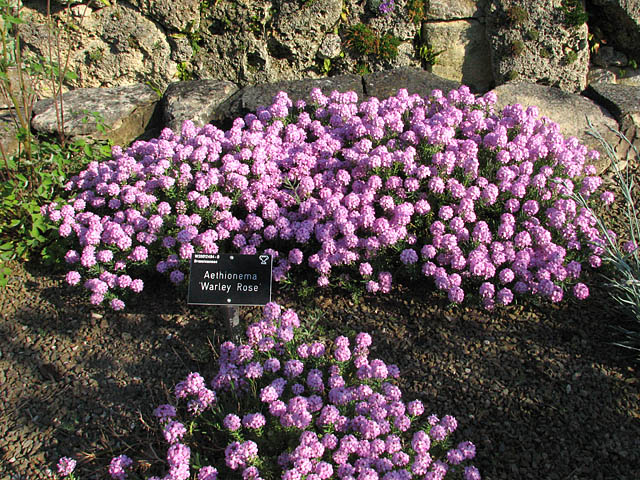
Aethionema 'Warley Rose':
In the display house itself the first Campanulas have been coming into their own. Everyone admired this C. carpatha:
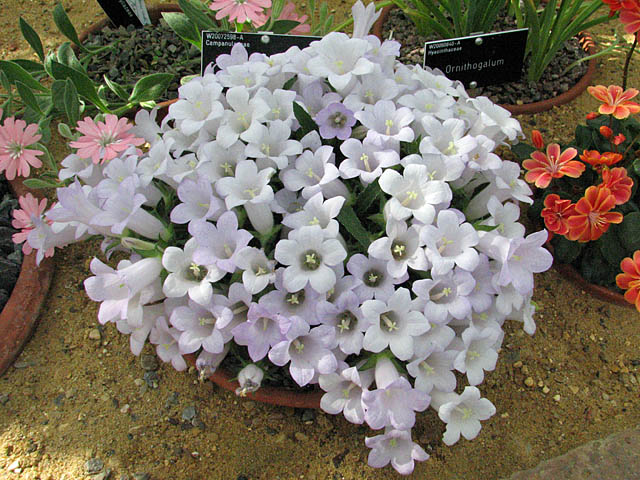
C. carpatha
The well known Edelweiss, Leontopodium alpinum has been flowering for a while. Last year some interesting research was published about this plant. In nature it is exposed to high values of ultra violet light and scientists wondered how it protected itself from tissue damage. They investigated the structure of the hairs that cover the plant. These are particularly dense covering the bracts that surround the flower head, but they occur also all over the aerial parts of the plant. They found that the surface of the hairs is made up of fibres whose diameter is very close to the wavelength of ultraviolet light. This, along with their arrangement, means that they absorb the ultraviolet light and dissipate its energy before it can enter the tissues of the plant. Understanding this clever approach to sunscreening could help us develop new and safer ways of protecting ourselves from skin damage caused by too much exposure to sunlight.
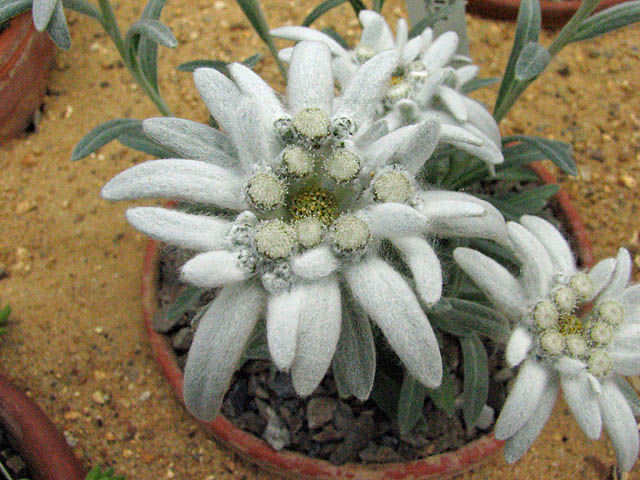
Leontopodium alpinum
To finish this time, a few more of the plants that have delighted us in the display house in May:
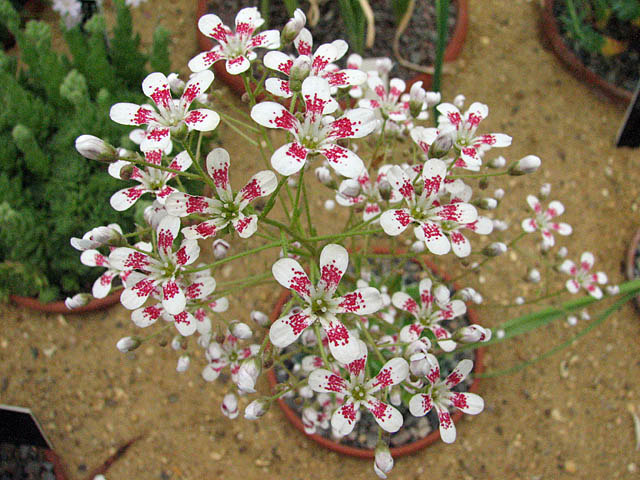
Saxifraga 'Southside Seedling'
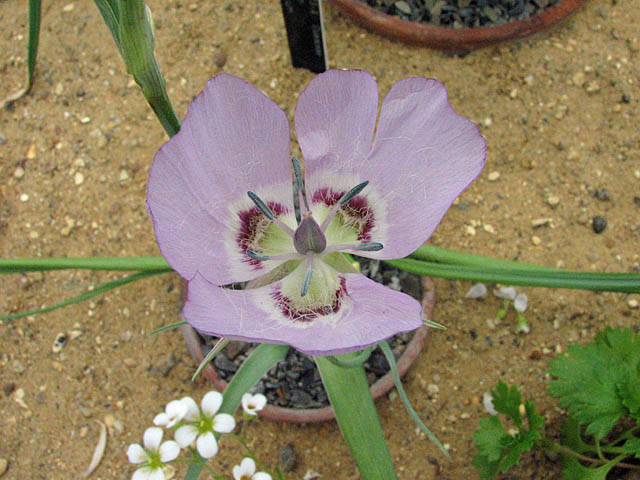
Calochortus longebarbatus
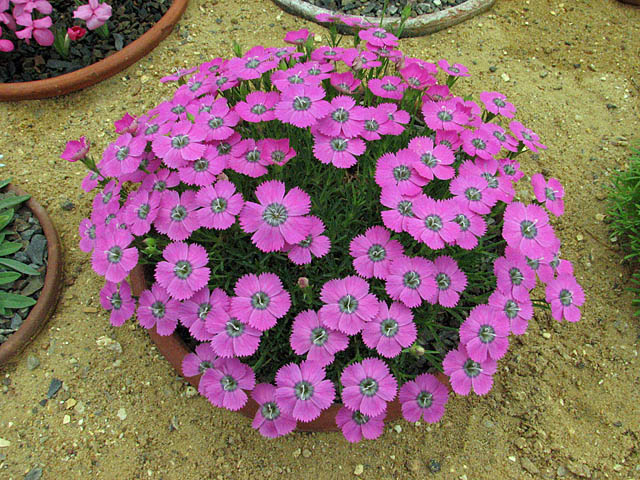
Dianthus 'Inshriach Dazzl
^ back to the top ^
|

